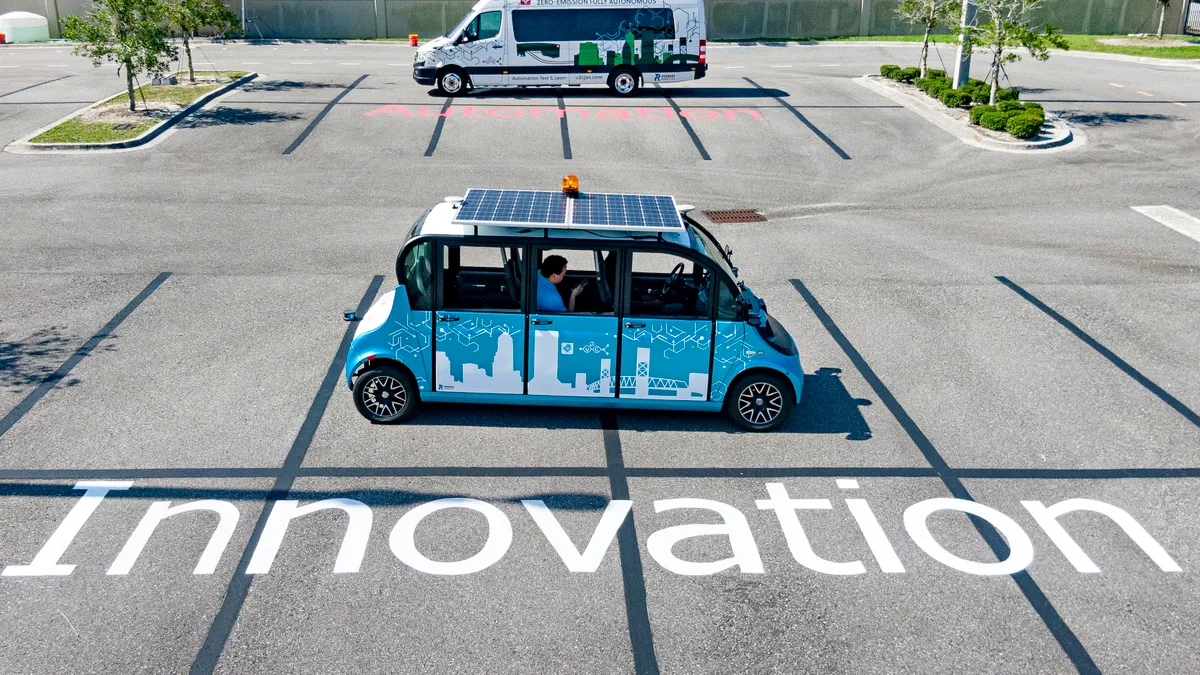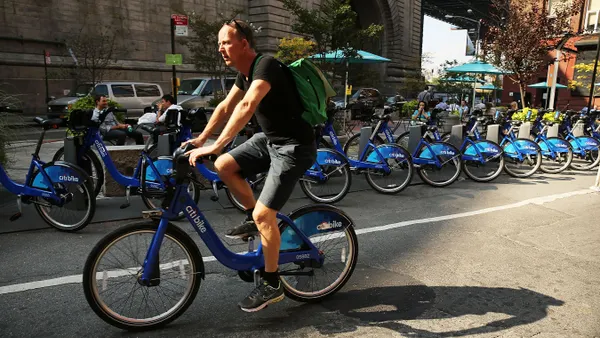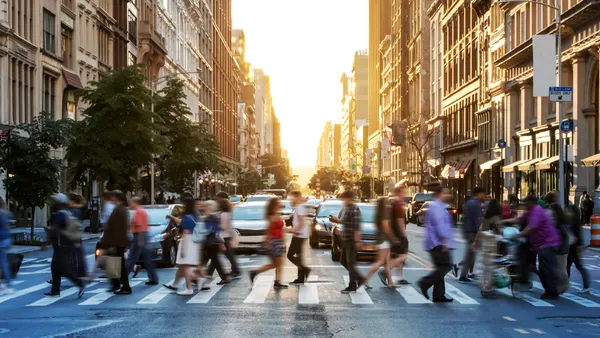The Jacksonville Transportation Authority plans to install 10 miles of automated shuttle service, in part by repurposing a 33-year-old monorail system, and potentially build transit-oriented development around stations in the expanded system for the north Florida city.
The first phase of the project, dubbed the Ultimate Urban Circulator, is underway. JTA contracted with construction management firm Balfour Beatty in January to begin the design of a 3-mile autonomous shuttle line along a busy street in downtown Jacksonville. The initial phase will connect major sports stadiums and entertainment venues along Bay Street with the existing monorail.
The idea for the autonomous shuttle system came out of discussions about how to modernize and repurpose the aging monorail, the Skyway people mover, said Bernard Schmidt, JTA’s vice president of automation. It was one of three similar automated, elevated, fixed-guideway systems built in the U.S. in the late 1980s. The other two are in Miami and Detroit.
Funding for the $49 million contract comes from a $12.5 million U.S. Department of Transportation BUILD grant, the Florida Department of Transportation, the North Florida Transportation Planning Organization and JTA.
The deadline for Balfour Beatty to complete the initial portion of the project’s first phase is later this month, Schmidt said.
In the first quarter of 2023, implementation work could begin, but the Bay Street corridor won’t require major construction. Instead, work will consist of installing “cameras and antennas and lidar sensors and radar sensors at every intersection on Bay Street and throughout downtown Jacksonville,” he said.
The proposed Shipyards station along the corridor is one of the locations selected as a possible site for transit-oriented development. According to a plan posted on the JTA website, it would include a mixed-use waterfront district, a public plaza adjacent to the station and a 20-acre linear park.
The Rosa Parks station, along the existing Skyway, could see vacant blocks redeveloped as low-rise live/work units and a neighborhood of multifamily homes. The JTA has developed proposals for several other stations as well.
The second phase of the project will connect the street-level Bay Street corridor with the 2.5-mile Skyway system. The monorail tracks will be converted into an elevated roadway for the autonomous shuttles. Additional plans call for extensions to more neighborhoods. This phase 2 project will be funded by the city of Jacksonville’s local gas tax.
Schmidt said the goal of the urban circulator is for it to become “a system that provides connectivity and interconnects our various neighborhoods.” Compared with a typical 40-foot transit bus, “these vehicles represent a more nimble, agile product,” he added.
JTA has tested vehicles from several different manufacturers, including Beep and Navya, as well as Local Motors, a company that shut down earlier this year. The final selection will be announced “in the next four or five months,” Schmidt said.











